Co-production Rule #4
Find your gatekeepers
You’re as prepared as you can be, you’re raring to go. Your research is done, you know every road and every building, the history and stories of the community. Your phone is charged, your camera’s memory card is formatted, your pencils are sharpened. It’s now time to take the big step and begin talking to real people.

If you know the community you’re working with, then you’re going to start with telephone calls, emails, or an initial face-to-face meeting. My preference is a conversation over an email every time. If you’re lucky enough to know your contacts, that’s great, but you might want to read on, for future reference, so you know where to look when your next co-production project isn’t as easy. And if you don’t know your community, then you’re probably wondering…
‘Who do I actually talk to? How do I get ‘in’ to the community?’
Your first contact with the members of a community you intend to work with is the single most important conversation you’ll have in the whole engagement/co-production. You need to find the right person, the individual who can open the doors.
Every community has its gatekeepers. They may not necessarily be that interested in what you hope to achieve, though they usually are. They open the doors, not just to buildings, but also to the social network of the place and its people. They have the keys to the community centre or church hall, they have the Community Facebook Group’s password, they know the clergy, the characters, and the local scéala (Irish: news, gossip, stories) And they’re not always that easy to find, especially in a rural setting.
A tale of four gatekeepers…
This is the story of finding the gatekeepers on Inch. It’s an illustration of the importance of walking, knocking on doors and good boots.
Maria
Inch Fort is a privately owned, Napoleonic-era fort, built on a rocky promontory on the north of Inch.
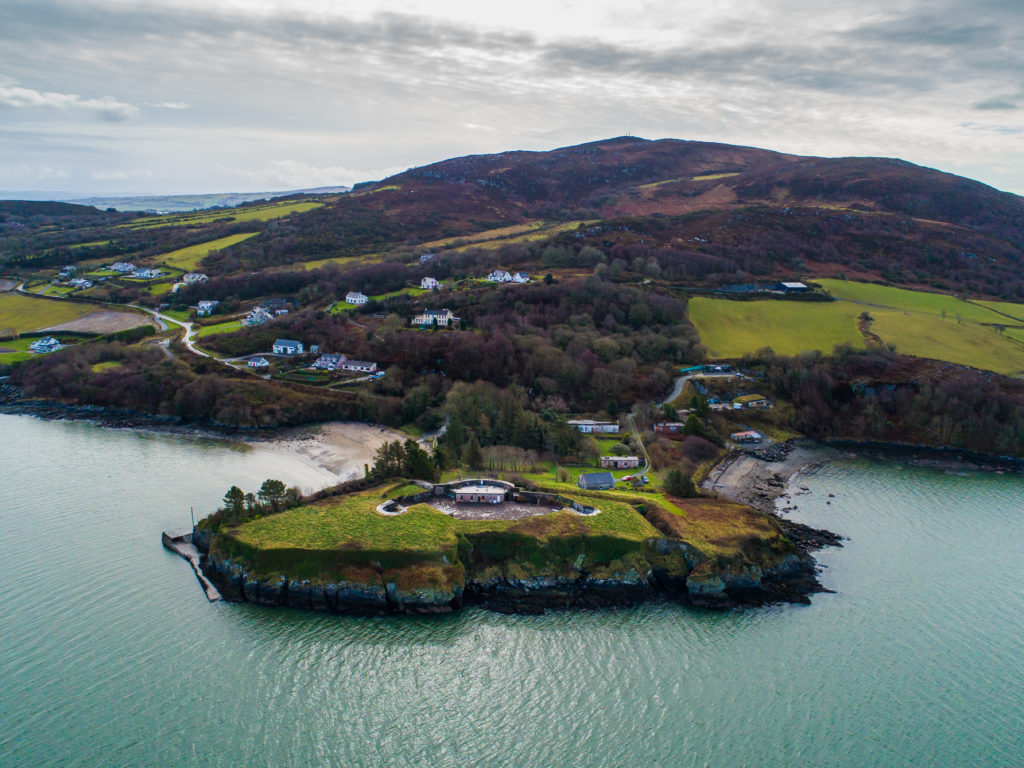
You’ll find a lot more about it on the Inch Heritage website. In December 2019, I visited the fort and the gates were locked. On the beach (left in the photo) there was a group of workmen, rebuilding the pier. I asked one of them if he knew how to get up to the fort, his reply “Dunree?” Now Dunree is another fort from the same era, 30 kms north of Inch. This man had been working below Inch Fort for two weeks and had no idea it was there. That’s how private the fort is. I offered my thanks and wandered back up the road, hoping to find someone else to ask.
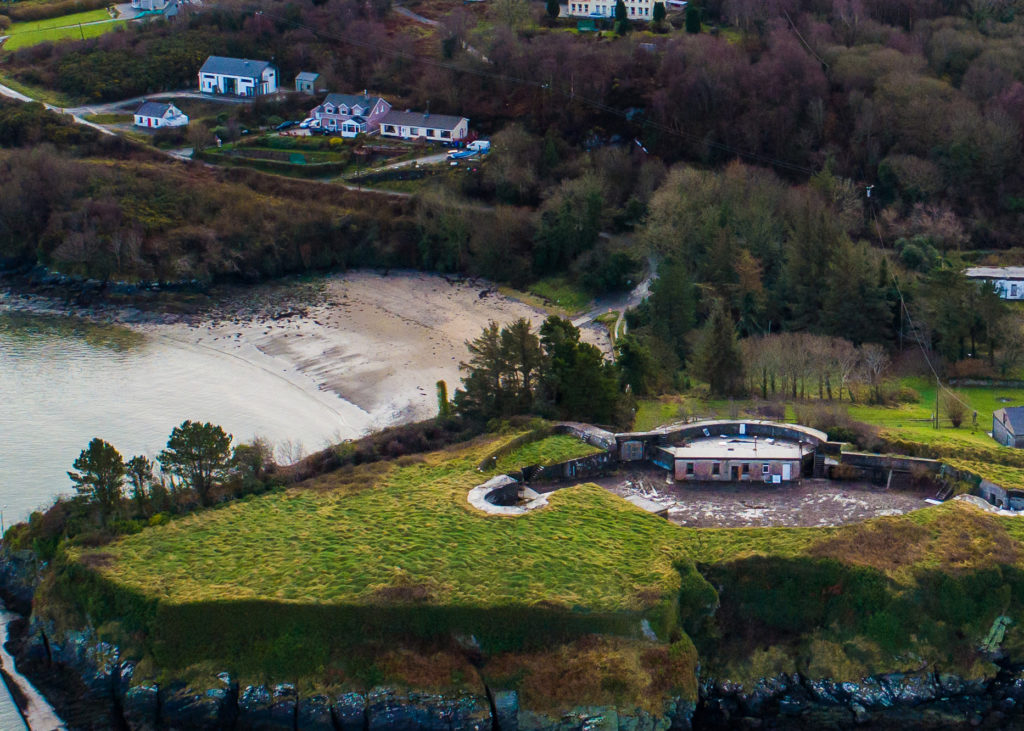
If you look at the photo again, you’ll see four houses above the beach. Nobody was at home in the first house, nor the second, but as I turned to leave, I heard a shout. I looked around but couldn’t see anybody. The voice shouted again and then I saw a hand waving from the trees beside the fort. I waved back and met Maria on the road, with her labrador. She walks her dog there every day and keeps half an eye on the fort. Did she know who owned it, I asked. ‘Of course, but she’s a very private person. If you give me your number, I’ll pass it on.’ And that’s how I found Maria, gatekeeper to the fort, island resident for thirty years and owner of Sandy, the labrador. And it’s how I came to be the owner of a set of keys for every gate and door in Inch Fort, given to me by Patricia, the owner, but more of that later.
Martina
Inch Hall is the centre of Inch’s community life. The building was converted from the old Catholic chapel when the new chapel, Our Lady of Lourdes, was built in 1922.
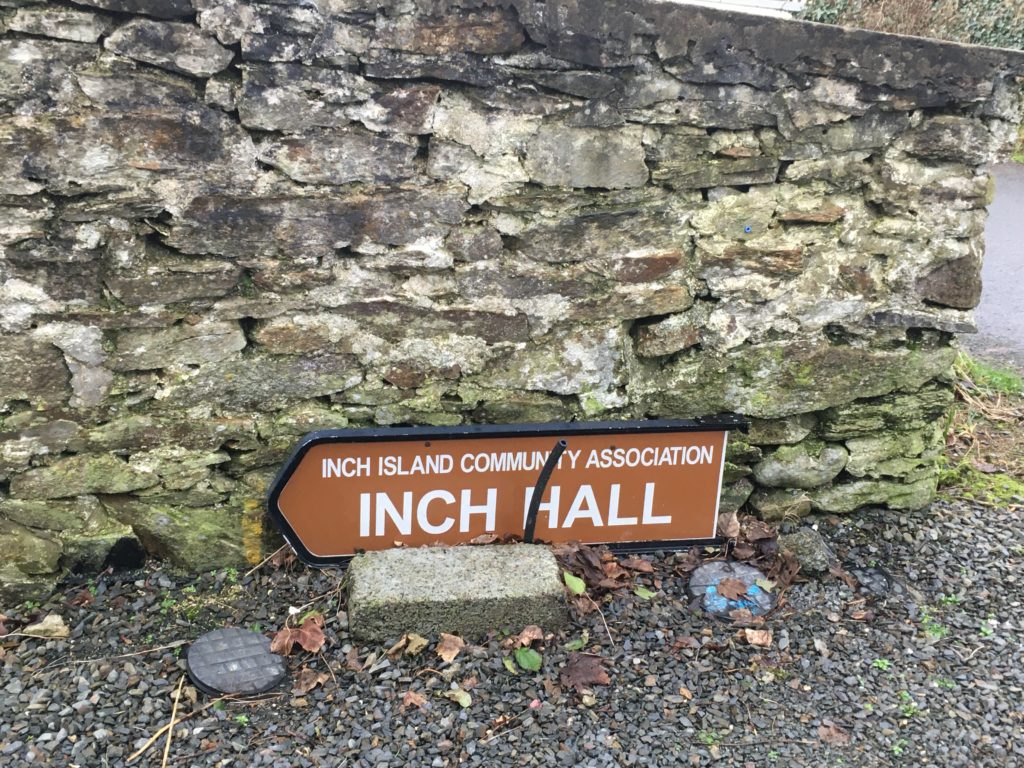
Knowing we were going to organise an introduction to the CINE Project open-evening, I needed to book the one place on the island that would have capacity for up to a hundred people (I was optimistic). Inch Hall is the only community building on the island, so I needed to find whoever had the keys. I drove over to Inch and stopped at the hall, but it was closed and there were no telephone numbers posted anywhere.
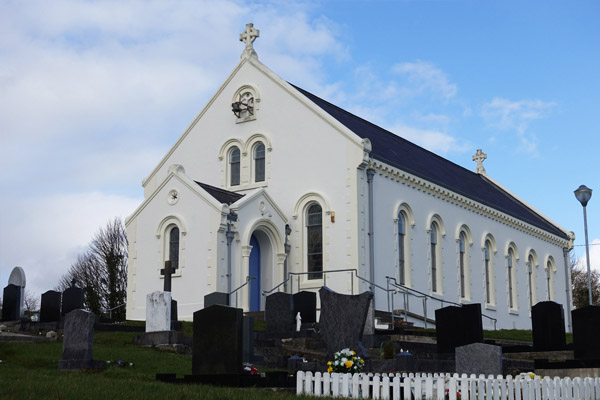
I noticed a man working in the graveyard of the chapel, across the road, so I asked him if he knew who might look after the hall. ‘Aye, you’d need to speak to Martina. She lives in the big new house, over there.’ And that’s how I found Martina, key-holder of Inch Hall.
Noel and Susan
When I finally met Patricia, the owner of the fort, she suggested I should talk to Noel, who lived up the road. She had no contact number, but explained where his house was. There are around 150 house on the island of Inch, and addresses are less postal code and more along the lines of: the bungalow, opposite the church… the white cottage, at the crossroads… the third house on the left after the bend. Noel’s house is next to the forest, opposite the house with the church in the garden.
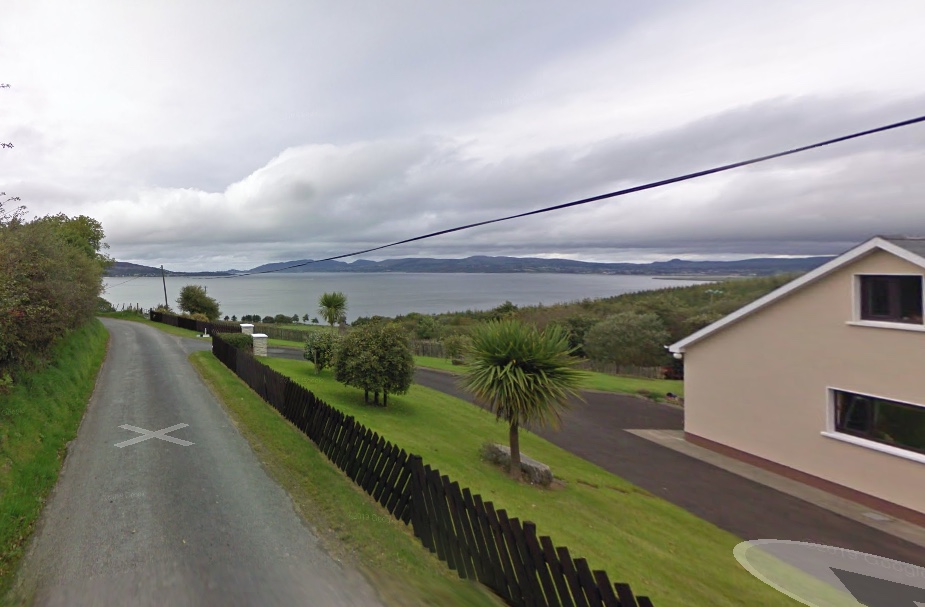
I’d noticed his driveway was narrow, and I had nowhere to turn, so I drove past his house once, turned around down the road a few hundred metres, drove past again and parked in the forest road. By the time I walked back down to knock on his door, he as out in the garden, noting my car registration number. Noel is an ex-detective, and part of the Inch Neighbourhood Watch. I said hello, and as I felt he was a little suspicious, showed him my Donegal County Council ID card. Ten minutes later, I was sitting in his living room, drinking coffee. After I’d passed the suspicious individual test and explained the project, he insisted I waited until his wife, Susan, came home, so I can tell her all about it too. And that’s how I found Noel and Susan, who put me in touch with half a dozen other islanders, and with whom I’ve shared some fascinating conversations.
Margaret
Our first community meeting at Inch Hall was organised for the 29th of January. I was expecting Martina to open up the hall, but Margaret arrived, and explained that Martina was busy. We started chatting and she seemed really interested but couldn’t make the meeting that evening. A week earlier, I’d contacted the Inch Hall Facebook page to ask them to put the word out to the community. Margaret mentioned that she was the administrator of the hall’s Facebook page. And the rest is history. Margaret’s father-in-law, Paddy, had some incredible documents and artefacts, Margaret became the project’s champion, and Inch Hall’s Facebook page is now full of old photos, Inch history and reposted @CINE_Donegal tweets.
Knock on doors, talk to people…
I can’t emphasise this point enough. Meeting people face-to-face, chatting about the project, knocking on doors, walking… this is the way you open doors. And if you’re introverted and find it difficult, welcome to my world. I’m painfully shy in social situations, but when I’m working, the game face goes on. Find yours.


